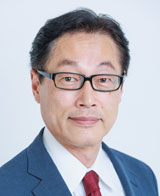About JSOT / President's Message
Message from the 17th President of the Japanese Society of Toxicology
 I, Mamoru Mutai (LSIM Safety Institute Corporation), am greatly honored to have been appointed the 17th President of the Japanese Society of Toxicology as of July 1, 2022. It will be my pleasure to serve at this position for the next two years until July 2024.
I, Mamoru Mutai (LSIM Safety Institute Corporation), am greatly honored to have been appointed the 17th President of the Japanese Society of Toxicology as of July 1, 2022. It will be my pleasure to serve at this position for the next two years until July 2024.First, let me briefly introduce myself. In 1985, I joined a chemical company of which I was involved in the research and development of agrochemicals and pharmaceuticals as a safety researcher and manager for 25 years. I then spent about 10 years in clinical development of pharmaceuticals and management of pharmacovigilance departments before moving to a contract research organization in 2020, where I have been working ever since. I joined the Society in 1988 and made a presentation at the 15th Annual Meeting in Sendai. As for my Society activities, after passing the 1st Examination for Diplomate of JSOT (DJSOT, JSOT certified Toxicologist) in 1998, I served as a member of the Selection Committee for the DJSOT examination questions and was involved in the basic education workshop program for several years, after which I worked for the Education Committee and Secretary General as a board member. I also served as President for the 45th Annual Meeting (Osaka) in 2018.
Eight years have passed since JSOT became a general incorporated association. In the first half of the past eight years, stabilizing our financial base was a major challenge, but we have been able to maintain a stable surplus for the past five years through measures such as cutting costs, raising membership fees, reforming the supporting membership system, and making the Journal of Toxicological Sciences available online. In the last three years, the COVID-19 pandemic threatened the continuation of activities such as annual meetings, various seminars, and DJSOT examinations, but thanks to the efforts of all concerned, the Society has survived without a significant decline in its efforts. During the next two years, we will be steadily implementing the tasks inherited from the immediate former President, Dr. Kanno, and at the same time, we will initiate medium- to long-term initiatives necessary for the further development of the Society toward the 10-year milestone of incorporation in 2024.
Our priorities will be to increase the Society's membership, maintain diversity, and promote interactive exchanges. The number of members of the Society, which at one time was over 2,600, has declined to just under 2,500. Although it is not easy to predict future trends, I believe it is necessary to consider trends in membership and take appropriate measures, taking into account the major changes that are occurring in nonclinical research in pharmaceutical industries associated with the diversification of drug discovery modalities. We should also make a conscious effort to increase the ratio of women among councilors and board of directors to diversify our leadership and points of view for the direction of the Society. As for supporting members, under the leadership of the former President, Dr. Kumagai, the membership system was revised and the number of supporting members has increased. In the future, I would like us to consider a review of the "Silver Membership System" to make it easier for companies that support toxicology research to participate in the association.
I believe that broad collaboration with related scientific societies to our Society is a feature of the cross-disciplinary nature of toxicology. I would like to increase our efforts to distribute information to the various societies more than ever, while maintaining a high level of sensitivity in receiving such information. In particular, in international exchanges with IUTOX/ASIATOX/SOT/KSOT and other societies, we should expect to see more interactions and information exchanges that transcend time and location differences through web participation and on-demand distribution, which have been dramatically improved in response to the COVID-19 pandemic. I expect that the number of opportunities for our members to access international conferences will increase drastically as more things can be accomplished while staying in Japan.
Over the past 10 years, the scale of the annual meetings has expanded and become a large gathering of up to 1,200 to 1,600 participants in 7 to 9 venues. As a consequence, the challenges of securing venues and diversifying the annual meeting program, given the limited number of large conference halls that are available, has become increasingly difficult for a president of the annual meeting to overcome. Furthermore, as mentioned above, it is expected that hybrid conferences, on-demand distribution and utilization of social networking services will become more common, and it is inevitable that the nature of the annual meetings themselves will change as well. It seems that the time has come for us to learn from the efforts of other societies, gather and organize information on what kind of annual meetings we should aim for as a society, and begin discussions.
The first and foremost mission of the Society is " to promote the progress and development of research in the field of toxicology" as stated in Article 2 of the Constitution and By-laws, and this mission includes holding of scientific meetings, publication of official journals, certification, education and training of toxicologists. With the inheritance of the achievements and accomplishments of our predecessors, I will work together with the new board members for the next two years to further develop the Society, while promoting various social contribution activities. Again, I humbly ask for the support and cooperation of all our members to achieve these goals.
July 21, 2022
Mamoru MUTAI, President of the Japanese Society of Toxicology


